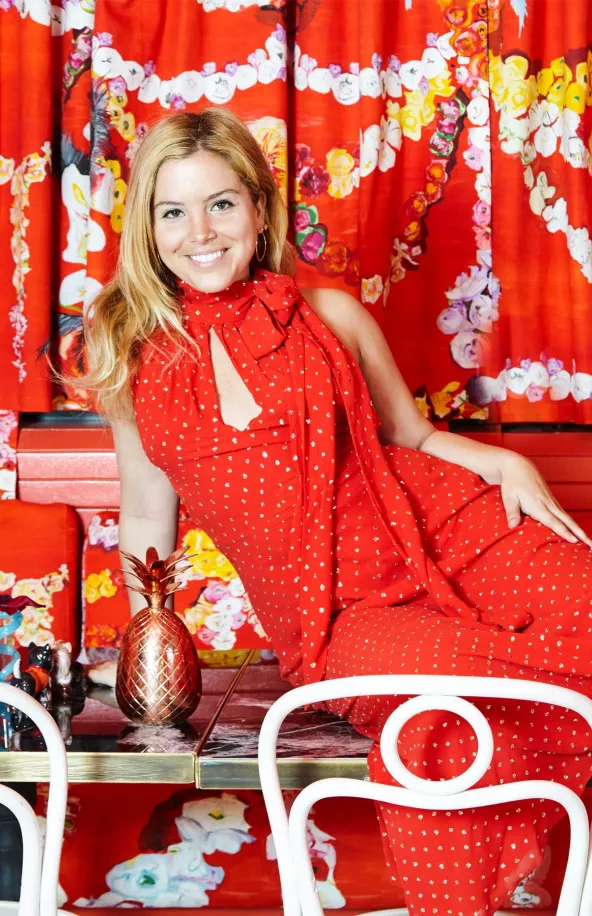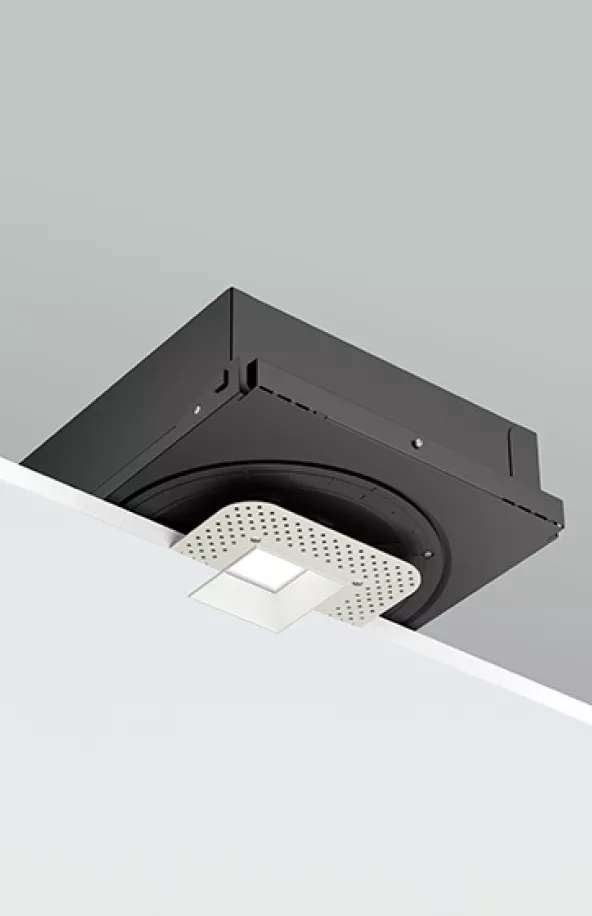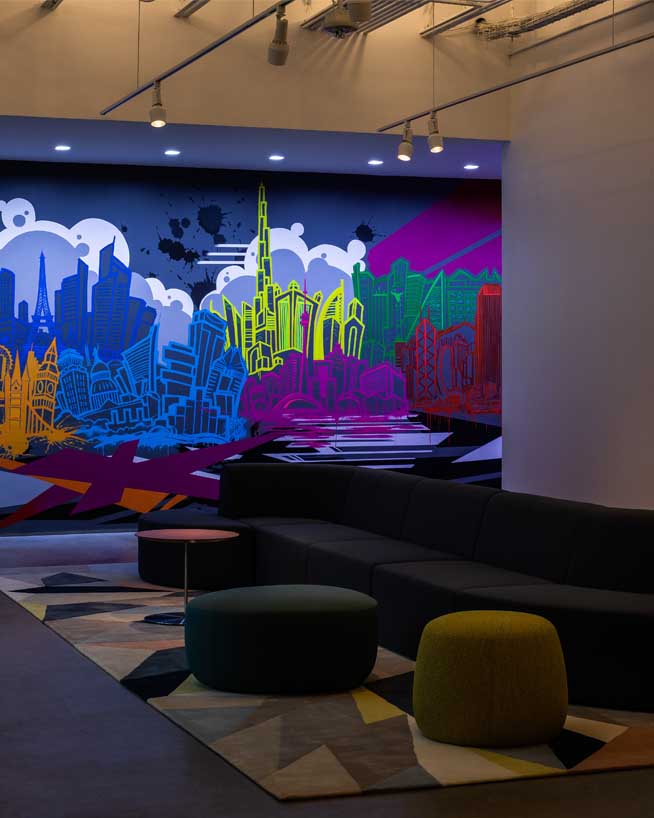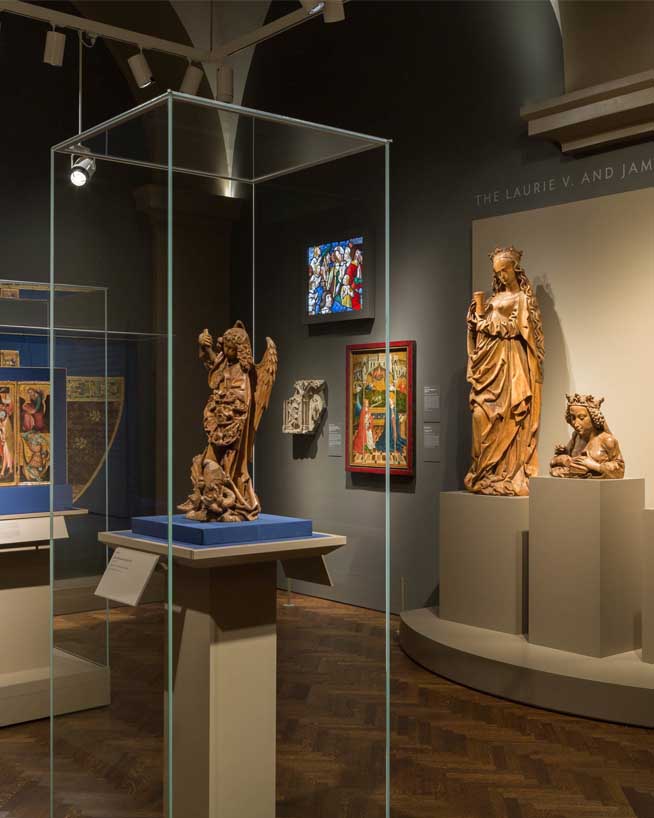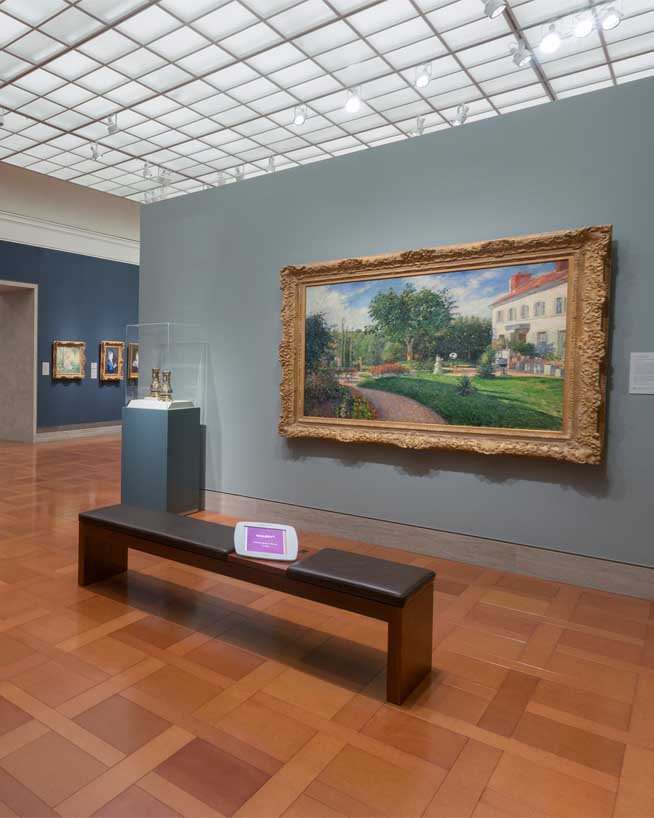How to Light Artwork Like an Art Gallery
March 26, 2023
For all the effort and resources that goes into curating a personal art collection, it’s imperative that the final result is museum-worthy. Proper lighting can achieve this. By using the right fixtures, light quality, and techniques, design professionals can enhance clients’ artwork, while protecting them from long-term damage.
Author
Lutron
Date
03.26.23
Read
10 minutes
10 Min
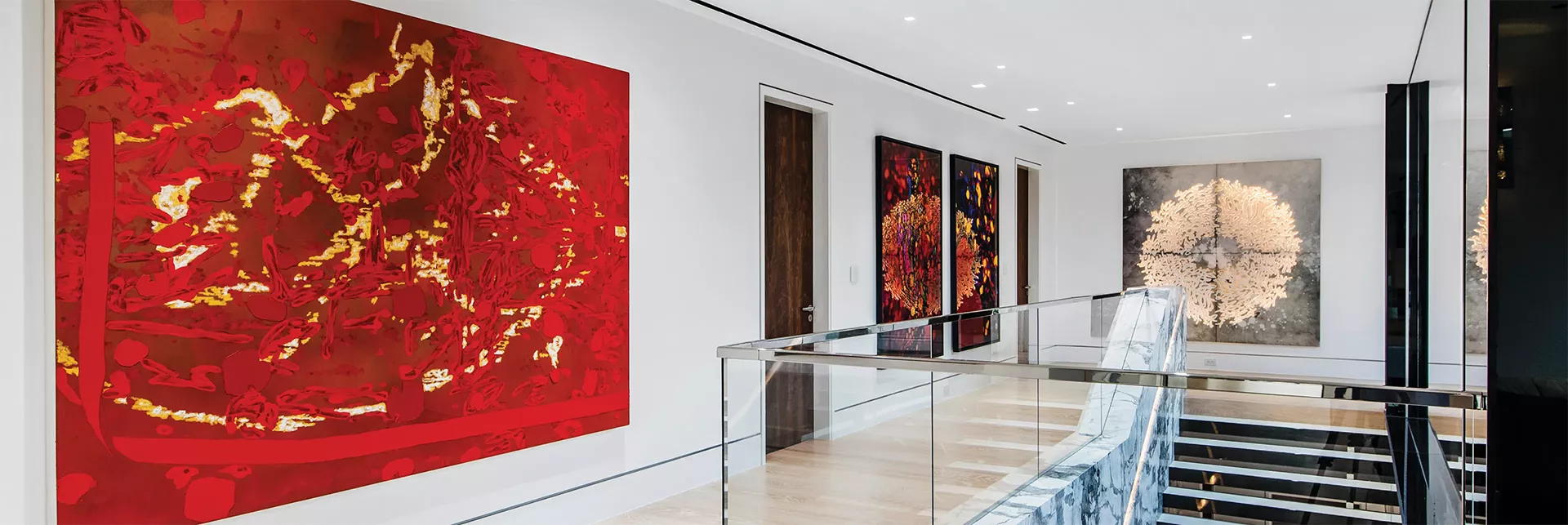
Techniques for Lighting Artwork
Wall Washing
The wall-washing technique allows designers to illuminate the entire wall surface with an even quantity of light. It creates a neutral context for the featured art. Because the wall is evenly lit, this method allows collectors to switch the artworks on display without changing the light.
Recessed lights, surface-mounted lights, and track lights can all act as wall washers if specified with the proper lensing/optics. In order to get an even wash of light on a wall, special attention needs to be paid to the spacing between light sources and the distance offset from the wall. The optimal parameters for a given light source can be found on a manufacturer’s specification sheet.
The wall-washing effect is most similar to ambient natural daylight. In the past, wall washers could look overly bright and cold at night. However, with Ketra’s natural light technology, one can lower light intensity and warm color temperatures to soften the light at the end of the day.
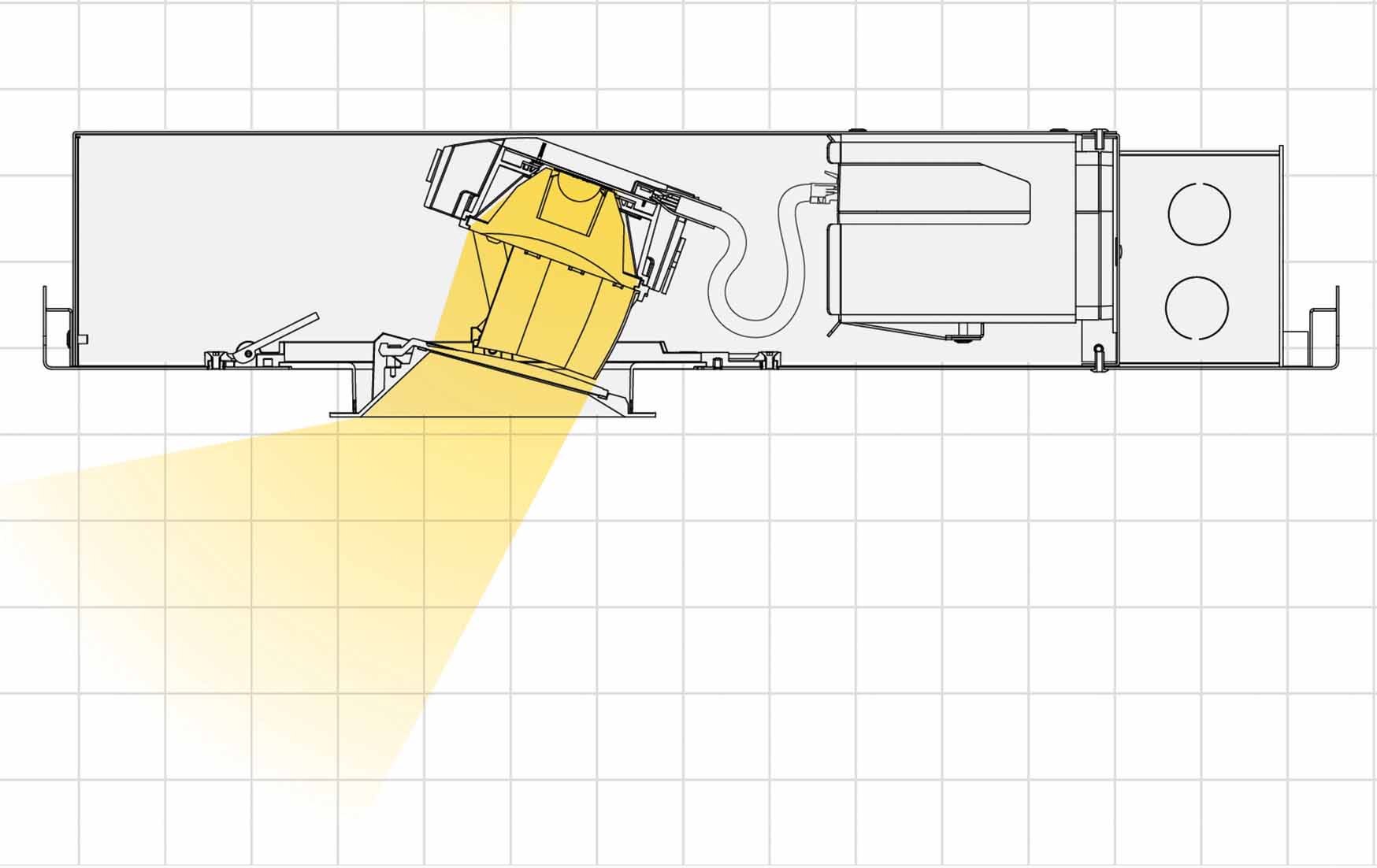
Picture Lights
Perhaps the most traditional technique, picture lights are wall-mounted fixtures that light individual pieces of art. “People usually use picture lights as an aesthetic choice,” Ramos says. “The fixtures can add to the overall design of the space.” Since they’re mounted close to the artwork, picture lights lend a more intimate viewing experience.
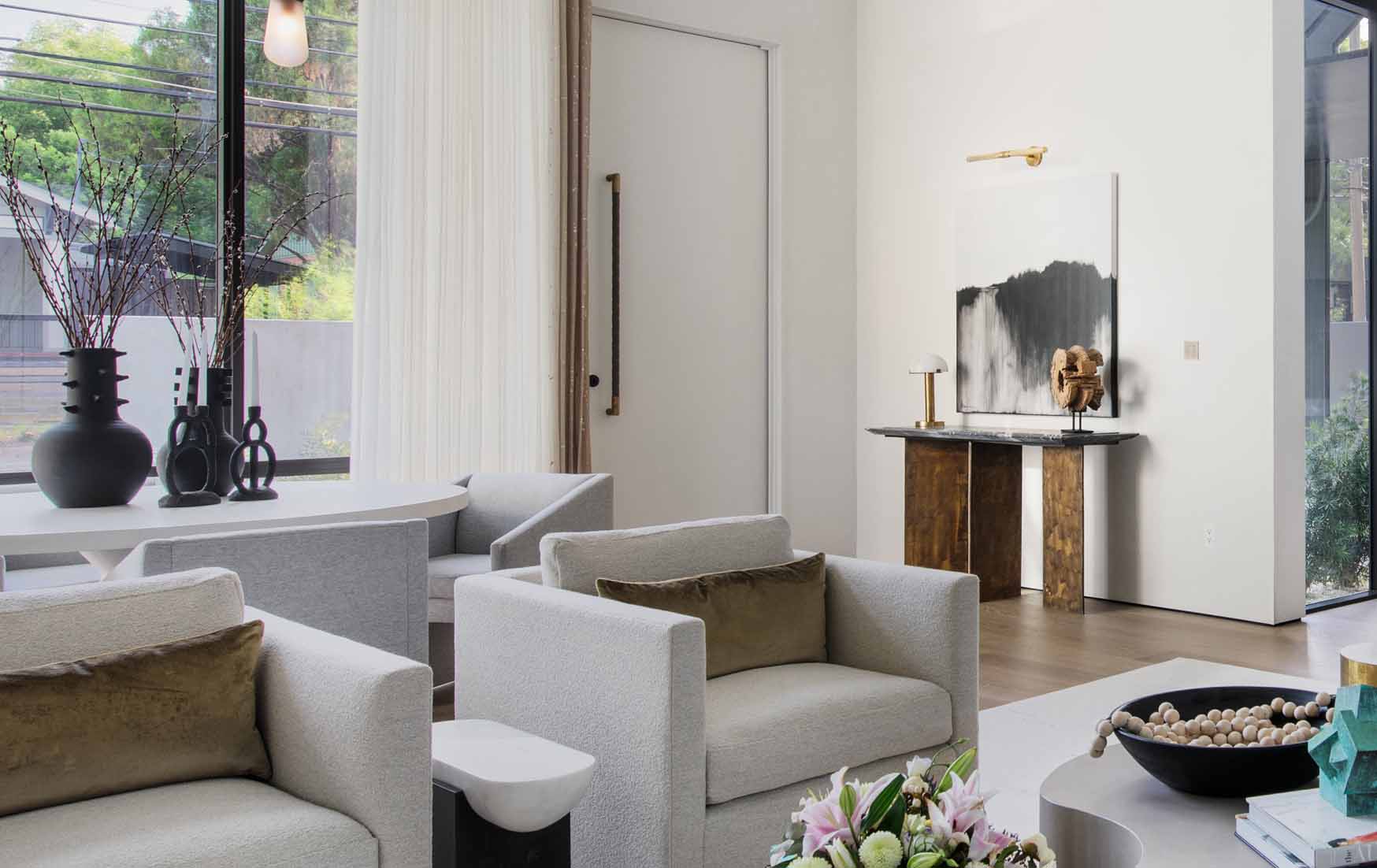
“Art is both an inspiration and an asset. It’s a reflection of people’s personality and taste. In order to bring out the best of the artwork and do it justice, you absolutely need to have beautiful lighting.”
Cecilia Ramos
Senior Director for the Architectural Market, Lutron
Downlights
The downlight category includes recessed lights and ceiling-mounted spotlights, which are aimed to highlight a specific piece of art. When using downlights, the light source should be tilted at a 30-degree angle to avoid glare (for pieces behind glass) and accentuate the artwork. “By using this rule, you’re able to pick up on just the right amount of texture and subtly enhance the shadows and highlights,” says Alex Miller, partner of luxury lighting design firm TM Light.
To use the 30-degree angle rule, the fixture must be able to tilt. For recessed lights, Ketra’s D2 Downlights offer 364 degrees of rotation and 40 degrees of tilt. Their LED lamps can also be screwed into aimable, surface-mounted fixtures.
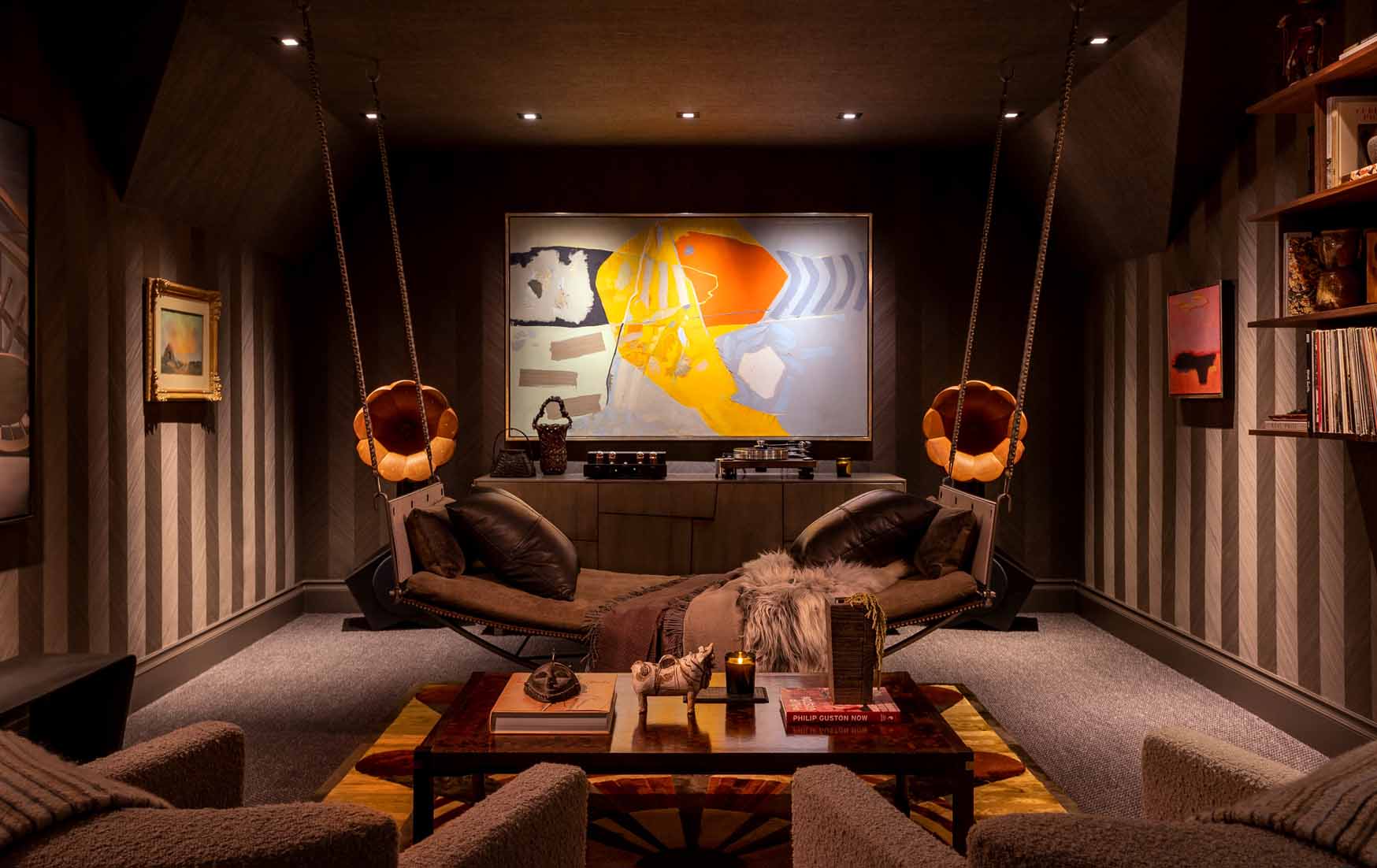
Photo Credit: Ryann Ford Photography
Track Lights
Museums frequently select track lights for their flexibility. “Because they’re typical in museums, we often see track lighting used in homes with large art collections and galleries,” Ramos says. With track lights, collectors can frequently rotate the items on display since the lights can be adjusted easily. Moreover, track lights can be used to create either a spotlight or wall-washing effect depending on the optics and lenses chosen.
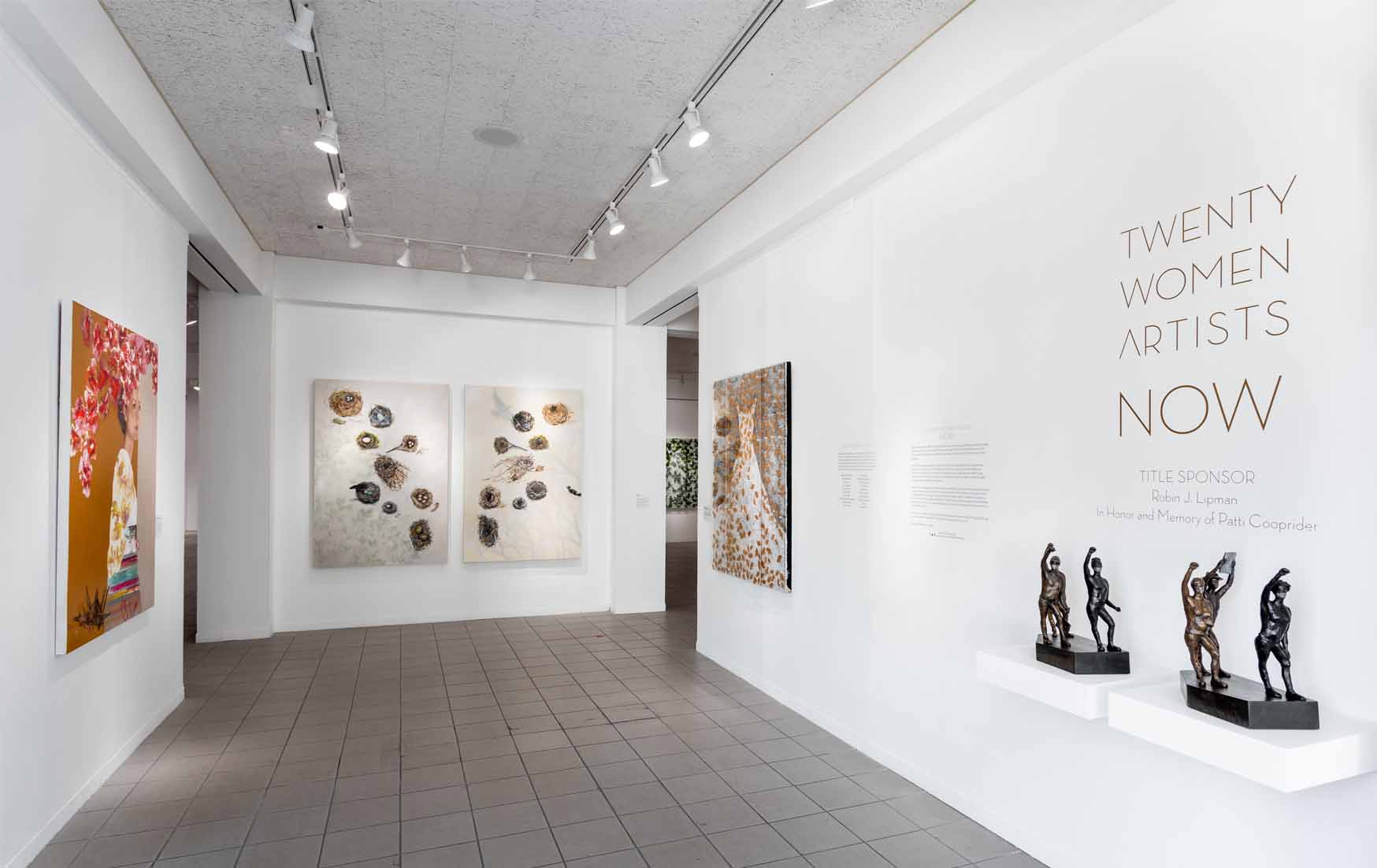
Tips for Conserving Artwork
Avoid Direct Sunlight
Taking measures to preserve artwork through proper lighting is incredibly important. “The way I see it, the paintings are worth a lot to the owner,” Miller says. “Not just monetarily, but also how they experience them every day. Why not honor their integrity?”
Exposing art to heat and high levels of UV rays can fade or otherwise damage the piece over time. To prevent this, keep the art out of direct sunlight and consider installing UV-filtering window treatments, which can be automated to protect nearby art.
Choose the Best Type of Light for Your Art
Older light bulbs have higher UV output than contemporary LED bulbs. Ketra’s integrated LEDs emit zero UV and have a long lifespan, making them a safe and convenient option for lighting art.
Halogen bulbs, while good for casting cool tones, produce higher levels of heat and UV rays. If using a halogen bulb, the fixture will require a UV-filtering lens in order to conserve the artwork. Older incandescent bulbs should be avoided altogether. They’re bad for the environment, produce a lot of heat, and damage art more severely.
Older light bulbs have higher UV output than contemporary LED bulbs. Ketra’s integrated LEDs emit zero UV and have a long lifespan, making them a safe and convenient option for lighting art.
Watch Ketra’s technology in action at the Art Institute of Chicago and Southern California’s Oceanside Museum of Art, then get started on your next project by booking a demo with Lutron’s professional design team.


